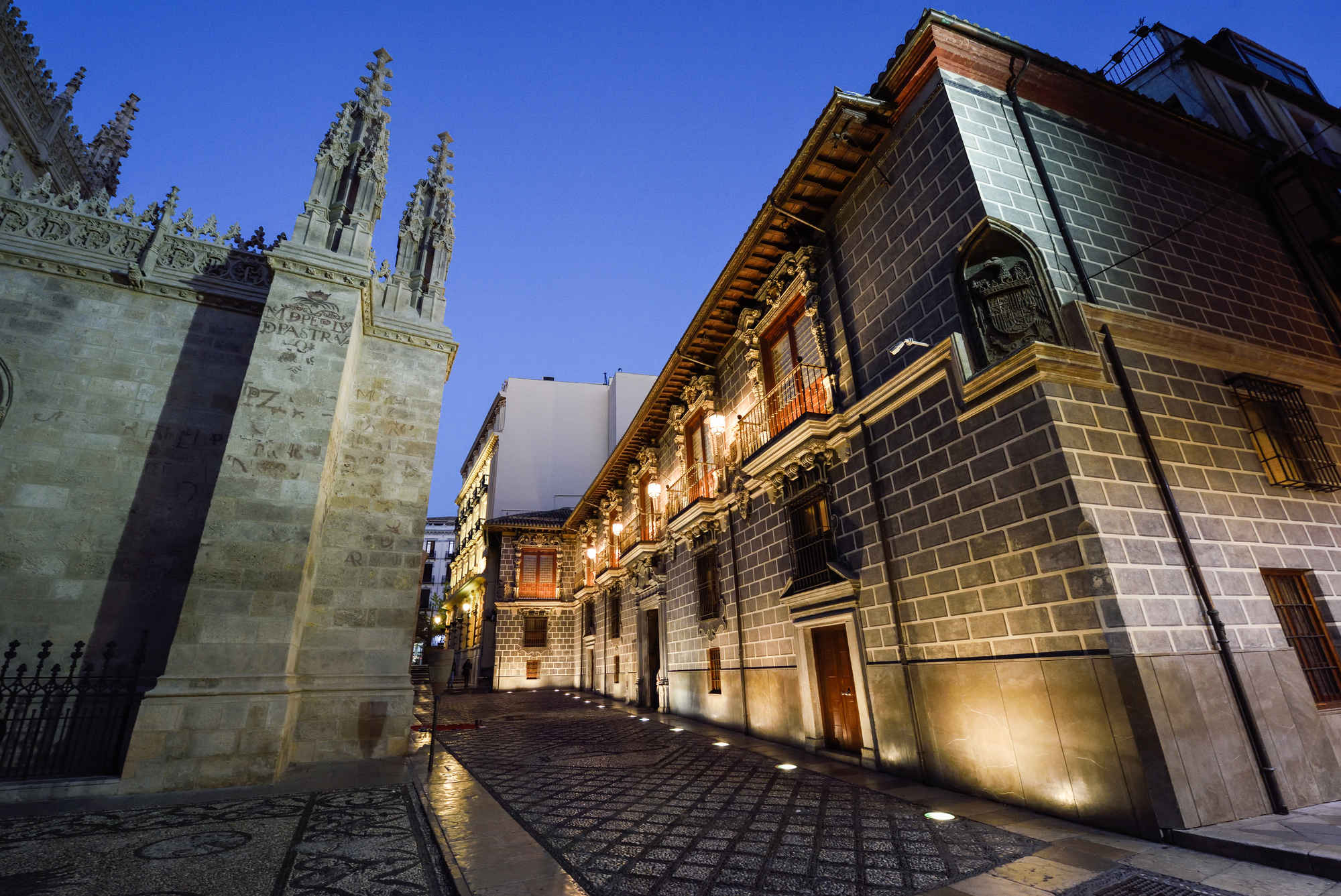
Founded in the 14th century by the Nasrid King Yusuf I, Madrasah, a name which means Koranic school or university in the Arabic language, was the first University of Al-Andalus, built to teach theology, law, medicine, astronomy, logic, mathematics and more. The school gave rise to poets of the likes of Ibn al-Khatib and Ibn Zamrak, both of whom have works etched into the walls of The Alhambra.
One of the last buildings from the Nasrid period standing, the Madrasah resides within the same suburb as the Great Mosque of Granada. After Ferdinand II and Isabel I took Granada, bringing an end to the Reconquista, the school was raided and many of its books burned. In 1500 the building was given a new purpose and used as the town hall of Granada, where in the building was overhauled giving a more Baroque appearance, however many of the original features remain such as in the buildings oratory, which retains its horseshoe arches, original colors, as well as the latticework and plaster on the ceiling. Additionally a room called “the hall of the 24 knights” was preserved housing preserved Muslim armors.
The building was reclaimed in 1841 by the state where it was repurposed back to its original purpose and became apart of the university of Granada and became the seat of the Royal Academy of Fine Arts Nuestra Señora de las Angustias.
Today the Madrasah, on top of serving as part of the university of Granada, is open to public allowing for tours of the once great university, where in you can view many great art works such as the “Virgin of the Rose” which is preserved and housed there.
For more information about the Madrasah:
https://en.granada.info/madrasah
or
https://www.lovegranada.com/monuments/madraza/
